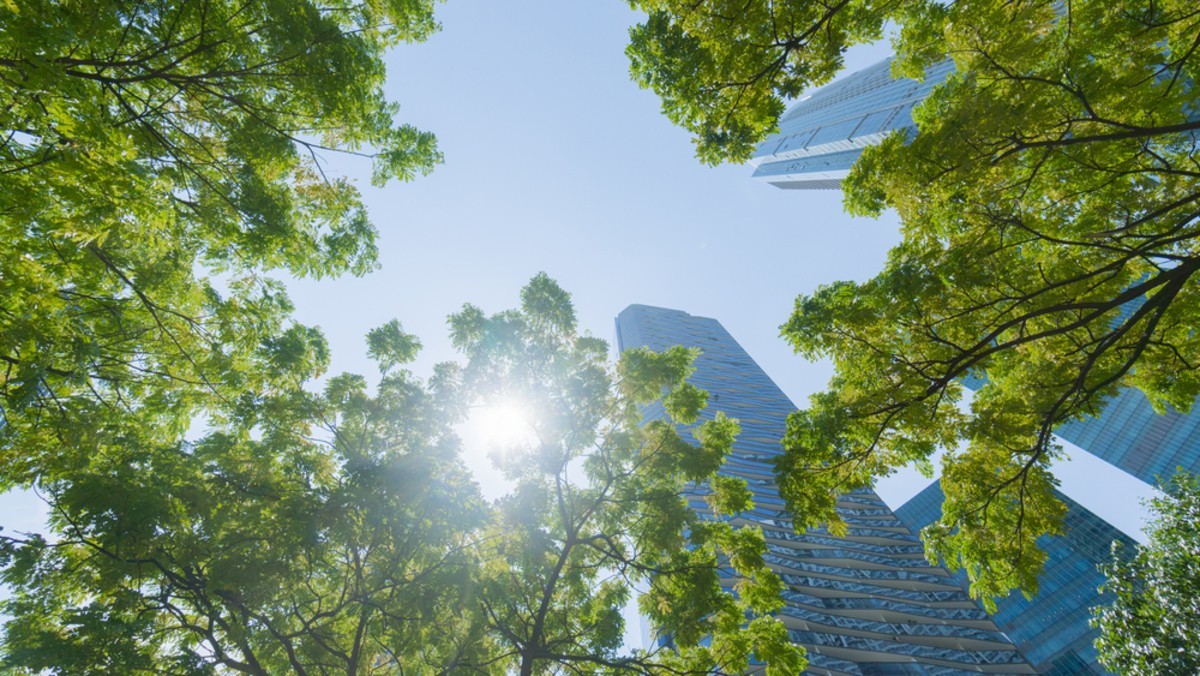Half of urban trees are outside their "comfort zone": future plantings must consider climate resilience
Construction21 International

Trees growing in cities world-wide may be at risk from climate change. Urban greening must use species that can cope with future conditions to secure benefits.
Trees and shrubs in streets, parks, urban woodlands and other spaces provide a range of vital benefits in towns and cities – where over half the world’s people live. They connect people with nature and mitigate the adverse effects of climate change, for example through cooling and carbon sequestration. However, climate change also poses a threat to urban trees, which may not thrive in warmer temperatures predicted, or survive heatwaves and drought which are also predicted to increase in severity and frequency. This presents not only a loss of ecosystem services provided to urban residents but also investment.
More knowledge is needed to ensure that urban greening is planned with future climatic conditions in mind. For example, it is better to plant drought-resistant species than to rely on irrigation. Planners and nursery growers would also benefit from an awareness of which extant urban trees may be under stress and face premature mortality. In a new study, researchers therefore conducted a global climate-risk analysis for urban forests, assessing the vulnerability of 3 129 tree and shrub species planted in 164 cities around the world.
They used the Global Urban Tree Inventory database1 to obtain data on trees and shrubs present in these cities and looked at how each city would be exposed to climate change, using this information to estimate tree vulnerability to changing temperatures and rainfall. The analysis focused on a 2050 scenario based on Representative Concentration Pathway (RCP) 6.0 of the Intergovernmental Panel on Climate Change. This pathway predicts an average temperature increase of 2.2°C by 2100, compared to 2005. Under this projection, cities closer to the equator will experience large decreases in rainfall, while cities at high latitudes in the Northern Hemisphere will be subject to the greatest increases in temperature.
The researchers’ analysis showed that many species growing in cities are already experiencing conditions outside their ‘safety margin’, or conditions usually tolerated, as indicated by their natural geographic range. For example, 15% of species had experienced maximum temperatures outside those to which they are naturally adapted, and a fifth had experienced low rainfall in dry seasons beyond their safety margin. Concerningly, for some cities, including Barcelona, the analysis finds all the trees currently planted are already in an unsafe climate for them.
Many of the species at risk have a narrow safety margin (they will reach the limits of their natural tolerance with a small change in temperatures or precipitation). About 40% of the species in the study had already exceeded their safe mean annual temperature and maximum warmest month temperature by up to 1°C.
Meanwhile, over half the species planted are currently experiencing mean annual temperatures (56%) and precipitation (65%) conditions exceeding those in their geographic range, in at least one of the cities where they are planted. By 2050, these proportions are projected to grow to 76% and 70%, respectively.
In the cities where they are currently planted, two-thirds of tree species are projected to be at risk from warming and changes in annual precipitation by 2050, state the researchers. Risk is highest in low-latitude cities such as New Delhi, India, and Singapore, where all species are predicted to be vulnerable to these changes. Only 62 of the 3 129 species assessed (2%) were at no risk from any climate variables, in any city.
Securing the long-term stability of urban trees and the benefits they provide depends on identifying and using the most climate-resilient species, say the researchers. Irrigation may decouple urban trees from decreasing rainfall but relying on such management actions can be costly or impractical, especially in the face of more frequent droughts and heatwaves. Planting trees most adapted to future conditions is the best way to ensure their survival without intervention.
The researchers acknowledge that measuring the occurrence of species does not account for all factors that influence distribution. This means that the climatic niche identified in this study may be an under (or over) estimate of the conditions a species can tolerate. Suitable growing conditions are also influenced by microclimate, soil and competition, for instance. Additionally, conditions in cities may be beneficial or negative for tree growth, but this is not explored in this study - though the researchers advise that monitoring urban tree growth could provide useful information.
In urban planning, tree selection has often been based on past and current climate, alongside management considerations. Considering trees’ adaptation to future conditions should now be paramount with any new planting, the researchers conclude.
Published on European Commission
Consult the source
Image credit: deposit photo



